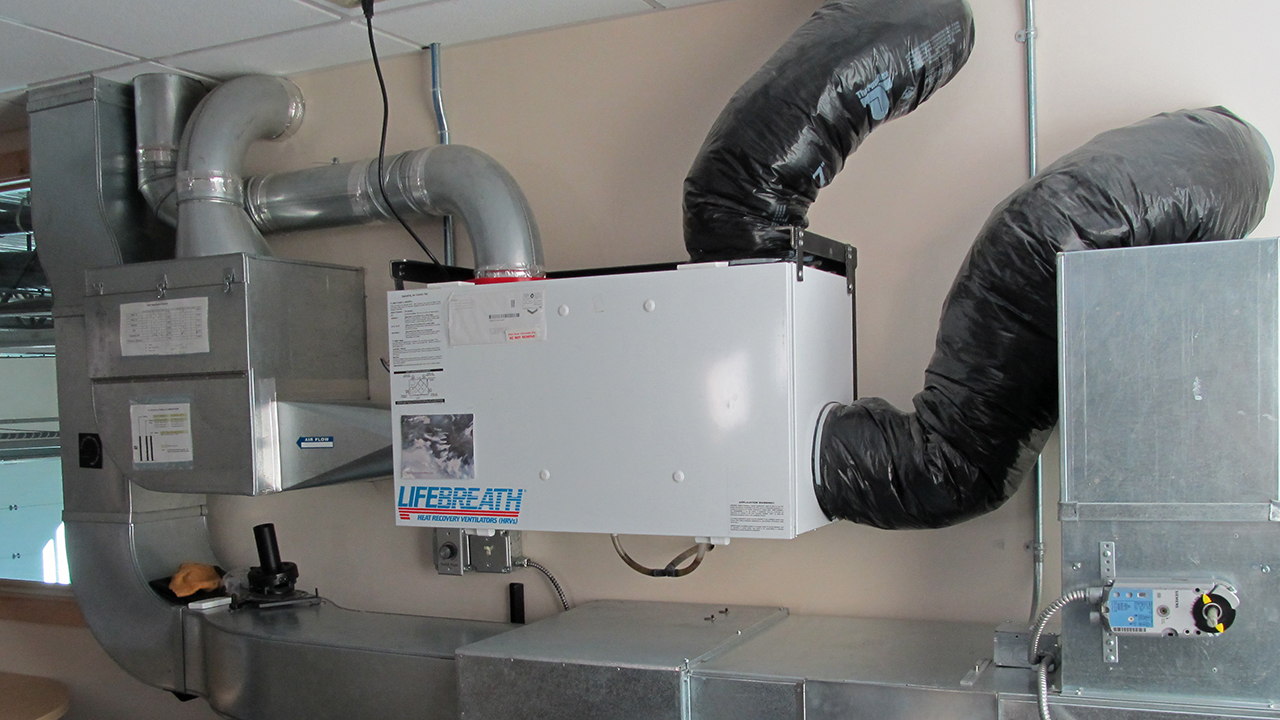How HRV Reduces Energy Bills Year After Year
Wiki Article
Exactly How Heat Recovery Ventilation Improves Indoor Air Top Quality and Reduces Energy Costs
Heat Recovery Ventilation (HRV) systems play a crucial role in enhancing interior air quality while concurrently lowering power expenses. By efficiently exchanging stale interior air with fresh exterior air, HRVs aid keep perfect humidity and lower toxins. Additionally, their capacity to recoup heat from outbound air minimizes the strain on home heating and cooling systems. As energy costs remain to rise, comprehending the full potential of HRV systems ends up being progressively important for home owners and companies alike.Recognizing Heat Recovery Ventilation Solutions

Heat recovery ventilation (HRV) systems play a crucial function in boosting indoor air top quality, particularly in modern-day, energy-efficient buildings. These systems are developed to move heat from the outbound stagnant air to the incoming fresh air, thereby lessening power loss while keeping optimal temperature level levels inside. HRVs contain a warm exchanger, fans, and ductwork, facilitating the continual flow of air. By eliminating interior toxins and introducing fresh air, HRVs aid to stabilize humidity degrees, avoid mold growth, and reduce allergens. The performance of HRV systems depends on their capability to recuperate up to 80% of the warmth from the exhausted air, promoting energy preservation while making certain a healthy and balanced indoor environment. Their combination is vital in attaining sustainable living methods.
The Importance of Indoor Air Quality
Indoor air quality (IAQ) is an essential factor affecting the health and wellness of residents in any kind of environment. Poor IAQ can bring about numerous wellness issues, consisting of breathing problems, allergies, and tiredness. Additionally, it can worsen status quo such as bronchial asthma. Aspects adding to reduced IAQ include pollutants from interior sources like cleansing agents, mold and mildew, and insufficient ventilation. Keeping excellent IAQ is essential for promoting a risk-free and comfy living or working area. Effective techniques to improve IAQ entail normal surveillance of air top quality, proper ventilation systems, and reducing the use of harmful compounds inside your home. By focusing on IAQ, people can ensure a much healthier setting that cultivates productivity and total top quality of life.Energy Performance Advantages of HRV Equipments
Numerous home owners and building supervisors are increasingly acknowledging the power performance benefits of warm recovery ventilation (HRV) systems. By moving heat from worn down interior air to incoming fresh air, HRV systems noticeably reduce the power required for heating and cooling. This procedure reduces dependence on standard HVAC systems, resulting in lower energy expenses. Furthermore, HRVs aid preserve a balanced interior climate, preventing too much home heating or cooling down demands. The ability to recuperate up to 90% of the warm from outward bound air additionally supports sustainability initiatives by decreasing general power consumption. HRV systems contribute not just to cost financial savings but also to a minimized carbon footprint, lining up with the growing focus on energy-efficient structure techniques.Installation and Maintenance Considerations
The efficient execution of heat recovery air flow (HRV) systems needs mindful consideration of installation and maintenance elements to guarantee peak performance. Correct positioning of the HRV system is essential, as it should be installed in a location that makes the most of airflow while reducing noise interruption. Furthermore, ductwork needs to be properly sized and insulated to avoid power loss. Regular upkeep, consisting of filter substitute and system cleaning, is crucial to safeguard ideal performance and interior air high quality. Owners ought to establish a routine upkeep routine to determine and address potential problems before they intensify. Cooperation with skilled specialists during both setup and maintenance stages can improve the longevity and performance of HRV systems, inevitably causing far better indoor settings and reduced energy expenses.
Real-World Applications and Success Stories
Discovering real-world applications of heat healing air flow (HRV) systems exposes their considerable influence on indoor air top quality and power efficiency across numerous setups. In household buildings, property owners have reported improved air quality, resulting in fewer allergic reactions and respiratory system concerns. Schools carrying out HRV systems have actually noted boosted pupil focus and lowered absence due to much better air flow. Business structures, such as workplaces and retail rooms, have experienced lower power expenses and increased worker productivity. A company office in a warm climate attained a 30% reduction HRV Heat Recovery Ventilation in energy bills after installing an HRV system. These success stories show that HRV modern technology not just contributes to healthier settings but likewise supplies tangible financial benefits, making it a valuable investment for various industries.Often Asked Inquiries
Can HRV Equipments Reduce Allergens in Indoor Air?
The performance of HRV systems in reducing indoor allergens mainly rests on their ability to filter and exchange air. HRV Heat Recovery Ventilation. By constantly changing stagnant air, these systems can considerably decrease allergen levels throughout interior environments
Exactly How Does Humidity Affect HRV System Performance?
Moisture greatly affects HRV system efficiency; high levels can lead to condensation, minimizing effectiveness, while low moisture might enhance air exchange. Balancing humidity is essential for ideal operation and preserving interior air high quality.Are HRV Systems Noisy During Operation?
HRV systems can produce varying noise levels during procedure, depending on their style and installment. Some systems operate quietly, while others might produce noticeable audio, especially at greater air movement setups or when badly preserved.What Is the Average Lifespan of an HRV System?

Can HRV Equipments Be Made Use Of in All Environments?
HRV systems can be made use of in numerous climates, yet their efficiency might differ - HRV Heat Recovery Ventilation. In extreme temperature levels, modifications or supplemental systems could be required to ensure optimal performance and convenience while maintaining indoor air high qualityReport this wiki page